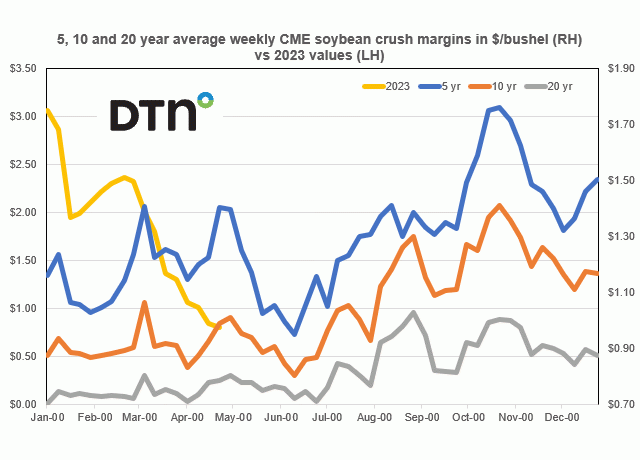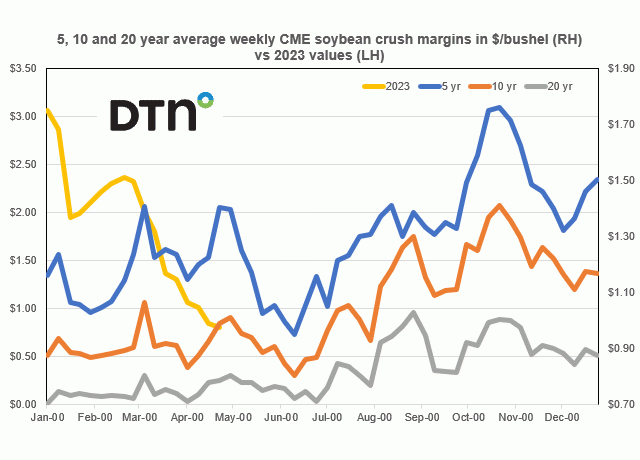Fundamentally Speaking
Corn Planting Pace in 'Big I' States
Things are now getting serious, as the lagged pace of corn seedings is likely to have adverse consequences for achieving trend yields and encouraging additional seeded area as forecasts for much of Corn Belt -- especially in eastern sections -- remains cold and wet.
Just 3% was seeded last week with a mere 7% of U.S. corn in ground as of April 24 versus 16% last year and 15% five-year average. The three "Big I" states -- Iowa, Illinois, Indiana -- account for about 40% of corn output and were just 5% seeded total versus 52% last year and the 46% five-year average. This is certainly one of the slowest seeding paces ever seen since USDA starting measuring seeding progress on a national basis starting in 1987.
P[L1] D[0x0] M[300x250] OOP[F] ADUNIT[] T[]
This graph shows the percent change in the combined corn planted area of Illinois, Indiana and Iowa from the end-of-March Planting Intentions report to the end-of-June Acreage report on the left-hand axis versus the percent the production-weighted corn yield of those three states deviated from the 20-year trend on the right-hand axis.
The circled figures are the combined percent of Illinois, Indiana and Iowa corn crops planted as of April 24. With data going back to 1994, this year's 5% planted rate for the three "Big I" states is barely ahead of the least amount of corn in the ground by April 24 of 3% in 2013, though lower than the 9% seeded rate in 1995.
It is thought a delayed pace of corn plantings would limit any increase in corn planted area from the March to June report and in years of big lags could result in corn area decreasing while late corn plantings are often associated with below-trend yields since the critical pollination period is pushed from the end of June-early July to the end of July when statistically it is hotter and can result in some of the corn not mature by the time the first fall freezes arrive in the Midwest.
In 2013 it turned out the drop in planted area was a mere 0.6% or just 200,000 acres, while the three I-state weighted yield was quite decent, coming in 1.7% higher than the 20-year trend.
However, 1995 was a different story, as late seedings that year resulted in a March-to-June acreage decline of 1.5 million acres or 5.2% with the final yield 11% below trend after a cold, wet spring and a mostly hot, dry summer.
Joel Karlin, Western Milling
(c) Copyright 2022 DTN, LLC. All rights reserved.






Comments
To comment, please Log In or Join our Community .